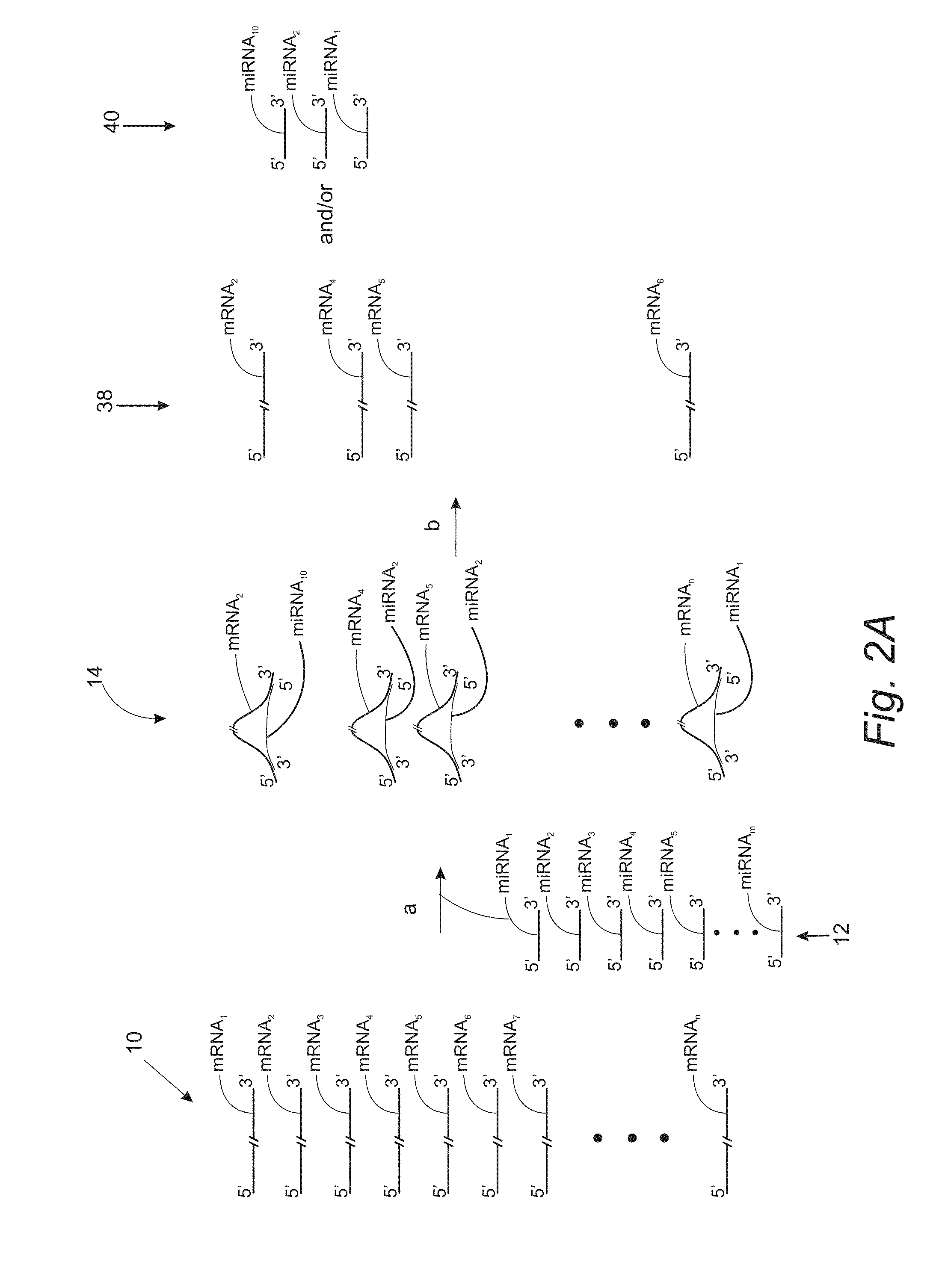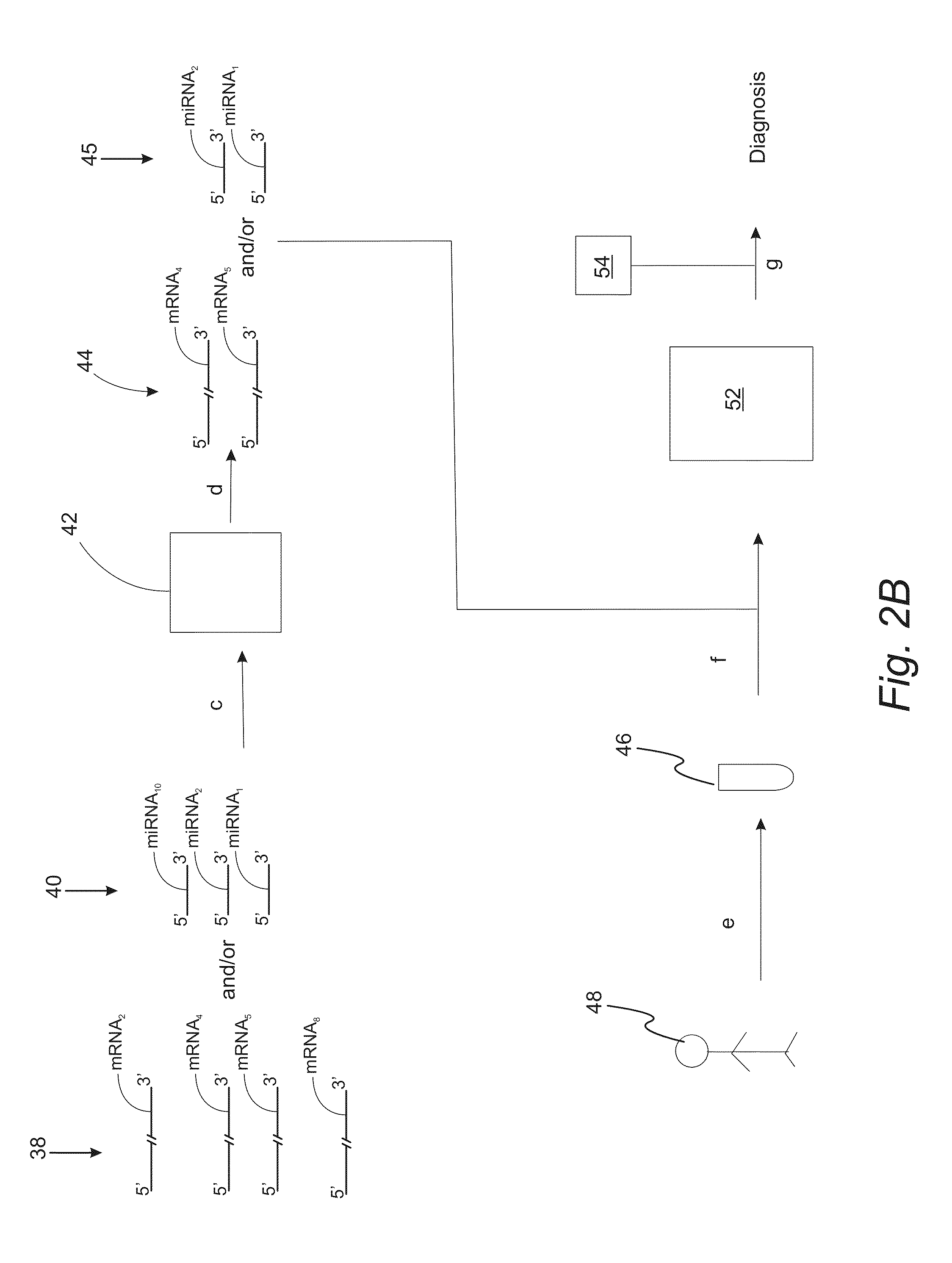Method of Determining a Diseased State in a Subject
a disease state and disease technology, applied in combinational chemistry, biochemistry apparatus and processes, library screening, etc., can solve the problems of different responses among fluorescent molecules, background fluorescence, and different responses of non-marking entities, and achieve stab hybridization and hybridization
- Summary
- Abstract
- Description
- Claims
- Application Information
AI Technical Summary
Benefits of technology
Problems solved by technology
Method used
Image
Examples
example 1
MicroRNA and Target Gene Signature in Advanced Neuroblastoma
[0054]Expression levels of mRNA depend on various factors including DNA copy number, DNA methylation, histone acetylation, active transcription factors, splicing factors, and regulating miRNAs. Here we analyse mRNA expression in a miRNA-centric manner, comparing it with miRNA expression data to increase the specificity of advanced neuroblastoma signatures. Unlike other miRNA-mRNA correlation studies, which look for any negatively- or positively correlated pairs with a certain statistical significance, our method investigates the consistency of expression value changes within each miRNA's targets. This is based on our hypothesis that if a miRNA's function is important and causal to progress neuroblastoma and the expression of the miRNA is up (down)-regulated in the advanced stage, its targets will be preferentially down (up)-regulated in the advanced neuroblastoma. Therefore, we will define a miRNA and its targets as importa...
example 2
mRNA Expression Analysis and Differently Expressed mRNAs in Advanced Neuroblastoma
[0056]In total, there are 30 primary tumor sample data from 14 stage 4 subjects and 16 stage 1 and 2 subjects. Briefly, the Vandesomepele group derived the expression data as follows: after each sample expression dataset was obtained using GeneChip Human Exon 1.0 ST Arrays (Affymetrix), all exon data were combined to transcript clusters (hgl8 / core exons), to obtain expression information per gene after normalization according to the RMA-sketch algorithm using Affymetrix Power Tools. We used these RMA normalized data calculated by the Vandesomepele group to obtain differentially expressed genes between the two groups. Student t-tests were performed using Microsoft Excel functions and mRNA lists with p-values less than 0.05 were prepared as up- and down-regulated mRNAs using HUGO Gene Nomenclature Committe (HGNC) gene symbol annotation. We ignored transcripts without gene symbol annotation or empty data ...
example 3
Mapping Differentiated mRNAs to Regulating miRNAs
[0057]For all mRNAs identified as differentially regulated, their regulating miRNAs were predicted using the miBridge miRNA target prediction method (v.1). We then calculated the hypergeometric distribution function of miRNA targets to test whether overall targets are either up- or down-regulated. Table 2 shows the predicted regulating miRNAs (within the miRNA list in the array measured) with targets enriched in either up- or down-regulated mRNAs with p<0.05. Within the mir-17-92 cluster, hsa-miR-18* targets are enriched in the down-regulated mRNAs, supporting our hypothesis and miRNA target predictions (though miR-92a is not included in this p<0.05 list, inclusion of genes with less than 15 empty values in subject samples yields enriched miR-92a targets in the down-regulated mRNAs with p=0.048).
TABLE 2Predicted miRNAs as potential regulators of advanced neuroblastoma (hypergeometric distribution p Number ofNumber oftargets intargets ...
PUM
| Property | Measurement | Unit |
|---|---|---|
| Fraction | aaaaa | aaaaa |
| Therapeutic | aaaaa | aaaaa |
| Level | aaaaa | aaaaa |
Abstract
Description
Claims
Application Information
 Login to View More
Login to View More - R&D
- Intellectual Property
- Life Sciences
- Materials
- Tech Scout
- Unparalleled Data Quality
- Higher Quality Content
- 60% Fewer Hallucinations
Browse by: Latest US Patents, China's latest patents, Technical Efficacy Thesaurus, Application Domain, Technology Topic, Popular Technical Reports.
© 2025 PatSnap. All rights reserved.Legal|Privacy policy|Modern Slavery Act Transparency Statement|Sitemap|About US| Contact US: help@patsnap.com



